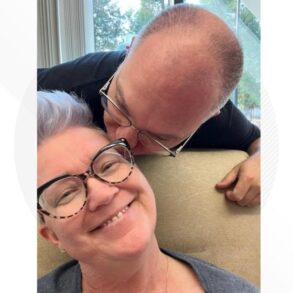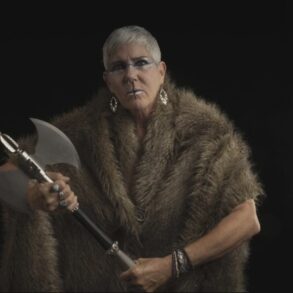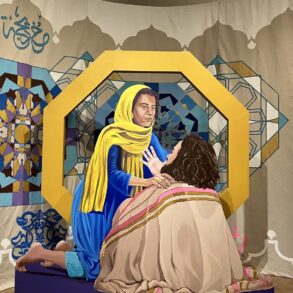
When the de Young Museum announced it would be mounting the first retrospective of Polish artist Tamara de Lempicka in the United States I had one question: What took so long?
The painter’s streamlined, architectural portraiture came to define the Art Deco style in the 1920s-1940s. Among the most well-known women artists of her time, she has a popular cache that’s created several cultural revivals. Her paintings, including “Young Lady With Gloves (also known as “Young Girl in Green”) from 1927 and “Autoportrait” (also known as “Tamara in a Green Bugatti”) from 1928, became widely reproduced in the 1970s as Art Deco came back into vogue.
Meanwhile, her socially transgressive story as a bisexual female artist was also a timely subject for second wave feminism to explore. In the 1980s, Anjelica Huston starred in John Krizanc’s play “Tamara” in Los Angeles and New York. Madonna, a noted Lempicka collector, introduced the artist to the MTV generation, featuring her work in several music videos, including “Open Your Heart” in 1987. The singer also incorporated projections of Lempicka’s work into her recent “Celebration” tour, which came to San Francisco in February.
More recently, Lempicka was the subject of a Tony Award-nominated musical that hit Broadway in the spring and a documentary by Bay Area filmmaker Julie Rubio that premiered at the Mill Valley Film Festival earlier this month.
Furio Rinaldi, curator of drawings and prints for Fine Arts Museums of San Francisco (which includes the Legion of Honor and de Young Museums), said the delayed retrospective is an example of the double standards that have historically kept women excluded from the larger art history narrative.
“The fact that she’s collected by celebrities was one of the things used to reduce her to some sort of marginal phenomenon of tastes,” said Rinaldi, who co-curated the exhibition with Gioia Mori. Sexism and the dismissal of Lempicka as a decorative artist were also factors, he added.
But now, more than 40 years after her death and almost a century after creating some of her most well-known works, the substance of Lempicka, not just the style, is finally at the forefront.
The de Young show, on view through Feb. 9, offers a stunning selection of more than 150 works on paper and paintings that makes a strong argument for her as an artist who helped create the modernity of her time.
Lempicka was born in Warsaw in 1894 into an elite Polish family with concealed Jewish ancestry. While she married lawyer Tadeusz Łempicki in St. Petersburg in 1915 and later Austrian Baron Roaul Kuffner in 1934, Lempicka was known to have relationships with women, such as French actor Suzy Solidor and her longtime girlfriend Ira Perrot, both of whom she painted.
Following Tadeusz’ arrest during the Russian Revolution in 1917, the couple immigrated to Paris, where Lempicka studied with cubist painter André Lhote. Rinaldi said her breakthrough came in 1925 when she was exhibited at the Bottega di Poesia in Milan, the same year she also showed at the International Exhibition of Modern Decorative and Industrial Arts, seen as the birth of Art Deco. From there she exhibited internationally, became sought after for portrait commissions and found celebrity.
When World War II broke out in 1939, Lempicka and Kuffner fled Europe to settle in Los Angeles. She continued to live in North America, where she witnessed the resurgence of interest in her work beginning in the 1960s, and died in Mexico in 1980 at age 86.
Lempicka’s highly stylized paintings are bold, often presented with the illumination and ecstasy of religious icons, and instantly recognizable.
It may surprise people when they realize how much of her art they’ve already seen in other contexts, and how her style has informed so much culture that came after. Pieces like “Portrait of Ira P.” (1931) that show the dark-haired Perrot in a white, bias cut gown draped in a red wrap, clutching bountiful white callas lilies, her ruby lips hinting a smile, have influenced countless cinematic moments, advertising campaigns and fashion editorials.
Lempicka often used fashion in her work in a commanding way, showing the delicate white folds of her daughter Kizette’s communion dress and veil in “The Communicant” (1928), the brilliant red coat in “Portrait of Mrs. Rufus Bush” (1929), the cascades of the frocks and hair of the subjects in “Irene and Her Sister” (1925). When you finally see “Young Lady With Gloves” you get why it made the impact it did with the subject’s Kelly green dress and white hat and gloves practically jumping from the canvas. Rinaldi fittingly refers to it as “the Mona Lisa of modernity.”
“Tamara de Lempicka”: Paintings and mixed media. 9:30 a.m.-5:15 p.m. Tuesday-Sunday. Through Feb. 9. $15-$30. De Young Museum, 50 Hagiwara Tea Garden Drive, S.F. 415-750-3600. deyoung.famsf.org
The exhibition also includes gowns by fashion designers Callot Soeurs, Madeleine Vionnet and Madame Grès contemporary to Lempicka, as well as feature her work for Die Dame, the German fashion magazine that commissioned “Autoportrait.”
Combining fashion and architecture, “Portrait of a Man (Tadeusz Lempicki)” (1929), shows her first husband in a dark, double breasted topcoat, white scarf swirling around his neck against a background of skyscrapers. There’s a monumental quality to the work as Lempicka presents Tadeusz as though he were another building, a human extension of the Art Deco skyline. Continuing that theme, the exhibition’s design masterfully creates an architectural backdrop for her works that presents them in the context of Art Deco decoration.
Also among the most commanding works are Lempicka’s female nudes, with paintings like “La belle Rafaël” (1927) and the partial nudes in “The Girls” (1930) presenting powerful, sensual depictions through the female gaze.
In her forward to the exhibition catalog, Lempicka collector Barbra Streisand, summed up the artist as “a liberated woman who knew exactly where she was going.” In that same vein, Rinaldi’s goal with this exhibition was to show her story as one of “emancipation through incredible talent.”
“If we don’t put her art in the forefront, I think we’re really missing the point,” he said.
Reach Tony Bravo: tbravo@sfchronicle.com







